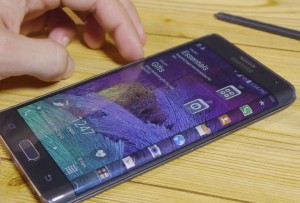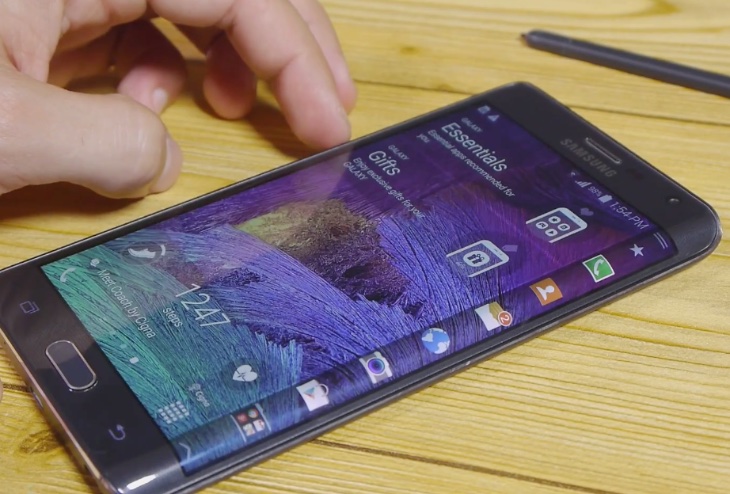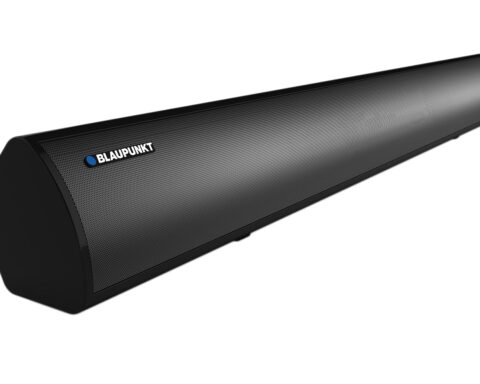After a dull 2014, Samsung is back and has placed all bets on its new  Galaxy S6 and S6 edge smartphones. The two smartphones offer some of the biggest changes we have seen in this industry in a long time, from the overall design to the materials of construction to the software functions. Samsung has certainly gone all out with its new flagship smartphones, and for good reason.
Galaxy S6 and S6 edge smartphones. The two smartphones offer some of the biggest changes we have seen in this industry in a long time, from the overall design to the materials of construction to the software functions. Samsung has certainly gone all out with its new flagship smartphones, and for good reason.
But does the curved screen of Samsung Galaxy S6 edge justify the price tag of Rs 58,900, or should you save a little money and stick to Galaxy S6? We find out in our review of Samsung Galaxy S6 edge.
DESIGN The design is the most striking aspect of Samsung Galaxy S6 edge. It is the first thing you will notice when you pick up the phone. The curved screen on the side is not a marketing gimmick anymore, and has evolved into an actual design language that puts form ahead of function. The smartphone feels much more natural in the hand than any other smartphone you have ever held due to the way your fingers wrap themselves around the curved Edge screens on both sides. It just feels natural.
Though Galaxy S6 edge is a total revolution of the Samsung design language, you can still see the influence of the Galaxy S3 in the overall look, with its curved corners; this is much more apparent in the white variant than in any other colour.
Though the smartphone runs on Android Lollipop, it still has haptic and hardware keys below the screen; the physical Home button integrates the fingerprint sensor. On the back, the heart rate monitor is located below the LED flash; both are positioned beside the camera module. The camera module juts out of the flat back, making it yet another smartphone with a protruding snapper on the back.
The bottom of the smartphone houses the 3.5mm audio jack, the microUSB port and speaker grill, while the top is home to the infrared sensor and sim card slot. On the left edge is the volume rocker, whereas the right side has the Power button.
As the curved screens on the sides take up a lot of space, the bezels are pretty thin on either side of the screen. The surrounding metal frame is rather thin as well, but still does not give a look of vulnerability as Galaxy S6 edge feels very solid when held in the hand.
Samsung has used glass and metal in designing the Galaxy S6 edge, a huge upgrade over the all-plastic Galaxy S5. The glass, as we saw in our week-long usage, is scratch-proof and does not crack even when the smartphone is dropped from approximately 3-feet high. The metal, Samsung claims, is 50% stronger than the one used by rivals like HTC and Apple in their flagship models.
EDGE SCREEN The Edge display is what distinguishes Samsung Galaxy S6 edge from Galaxy S6. It is the whole essence of the S6 edge design and is, in fact, something that sets it apart from every other smartphone in the market.
Of course, the Edge screen is not something new to us. It was first seen in last year’s Galaxy Note Edge, but this time the Edge display can be seen on both sides of the screen, not just one. But we need to make something clear: the Edge screen can work on only one side at a time. So, for example, if you have enabled the Edge display on the left side, it will not appear on the right side.
In the Edge screen menu in Settings, you will find all the features of this unique display panel. The information you can see on the Edge screen comprises: missed notifications, Yahoo-powered news, stocks and sports scores (no cricket yet) and Twitter trends. You can download more features from Galaxy Apps, but compatible features are less this time compared to Galaxy Note Edge.
DISPLAY The primary display of Samsung Galaxy S6 edge measures 5.1-inch and has 2K resolution (1440x2560p), meaning 577ppi pixel density (the highest in the world). The Super AMOLED panel has toned down the inherent greenish tinge and also brought down the colour saturation level noticeably. In fact, the colours on Galaxy S6 edge look almost neutral; you can, of course, change the colour temperature to your liking in Settings.
In terms of quality, the display panel of Samsung Galaxy S6 edge is top notch in all aspects. The screen does not lose colours at acute viewing angles, nor do the colours appear washed out under the sun.
Samsung Galaxy S6 edge is the only smartphone in the world protected by Gorilla Glass 4 (on the front and back). We tried scratching the screen, to no avail. We also put the smartphone in the same pocket as our keys. Not a scratch.
HARDWARE For the first time, Samsung has not used a Qualcomm processor in its flagship smartphone; instead, it is only selling the Exynos-powered variant globally. The 4G-enabled Exynos 7420 octa-core chipset runs at clock speed of 2.1GHz and is designed on 64-bit CPU architecture; designed on the 14nm process, this chipset is said to be more efficient than previous ones, and process tasks 35% faster. It is also said to reduce battery consumption by 35%.
To back up the Exynos 7420 processor is 3GB RAM; instead of the industry-standard DDR3 RAM, Samsung has used DDR4 RAM, which helps increase running memory by up to 80%, the company claims. Galaxy S6 edge comes with a hybrid flash storage that reduces lag by a wide
margin, Samsung says; the smartphone comes in 32, 64 and 128GB variants, with no support for microSD cards.








